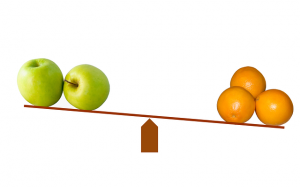Whether you are thinking of buying or selling a home in Los Angeles with its extremely low inventory, you will need to pay attention to the value of comps, or how the list price of a home is calculated. I am sure you have heard the term “comps” bandied about. Comps are comparison properties, and basically they are an indicator of fair market value.
Buyers and sellers are going to look at home prices differently. Obviously the seller is going to want to net as much as possible, the buyer is going to want a deal, and there is often a dance that happens during negotiations before a meeting of the minds is reached.
The housing market, like any other, is governed by the rule of supply and demand. When there is a low inventory of homes and a large demand then prices rise, and vice versa. The former is the case in Los Angeles at present and trying to set a fair price for a home is becoming a challenge, as as is evidenced by the number of “overpriced” listings coming on the market.
What do I mean by “overpriced”? When you see a home come on the market at a price that does not make sense compared with other homes in the area or units in a building, then you immediately think the listing is overpriced. And often it is. Take for example a unit in a luxury condo building that was bought and sold within three months for $225,000 more. Basically the only upgrade was the kitchen. I was sure the unit was not going to sell, but it did, in just under two months. This is good news for a prospective seller, bad news for a prospective buyer, and a problem for the real estate agent. I would imagine the buyer of this unit was an all cash buyer, because it is not likely it would have appraised at that price for someone getting a loan. However now when deciding on the list price of the next sale in the building the seller will be using that listing as their comp.
The opposite would apply if there were a hardship sale, and the listing sold for less than market price. The buyer is going to look at that unit as a comp. The seller not so much.
So in order to set the price of a listing by a buyer and to determine whether that price is at fair market value the respective agents are going to be looking at comparable sales. They will:
- Look up sales within the past three to six months in the same building if possible, and if not as close as possible to the subject property. The same for single family homes. They will look as close as possible in the neighborhood. If there have been no sales within that period or that direct neighborhood, they will go back further or extend the area. This will be done using Multiple Listing Service sales data which is the most current and accurate.
- Compare the sold properties with the subject property (the listing).
- Size
- Location
- Upgrades
- Amenities (pool, parking, etc.)
- Adjust the price of the comparable property according to the plusses and minuses of those homes compared with the subject property. For instance, if the comparable property has a swimming pool and the subject property doesn’t then the comparable price will be lowered. The opposite is true if the subject property has the pool.
- Check for extenuating circumstances such as a short sale or foreclosure which are hardship sales and unfairly skew the prices.
- Not take into consideration current listings in the area of the subject property. Until they have sold they mean little.
This is one of the reasons that looking on one of the big web portals for an estimate of prices will not provide you with an accurate reflection of the market. For that you need someone on the ground who has conducted an in-depth analysis of like-for-like properties and can make the appropriate adjustments.
If you are a cash buyer then the price of the home may not be a factor if you love it and must have it. A home is only worth what a buyer is willing to pay. But for a buyer with a loan and a fixed budget price is a huge consideration. It will have to appraise and you will want to know that you are building equity.
Pricing a home is an art these days. You may also see homes that seem to be listed way under market price. That is a tactic used to encourage multiple offers which bid the price of the home up, and it is frowned upon. Putting a fair market value on the home is the best way to sell. The price is easy to check, buyers will not be able to argue with it, and the home will sell much faster for the listed price than an overpriced one which often ends up selling for less than the market price, because it has been languishing on the market.
| Need Help? Have questions? Fill out the CONTACT FORM or call Jane at 310-351-9208 |

